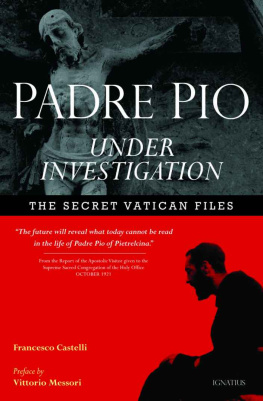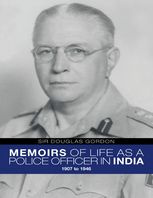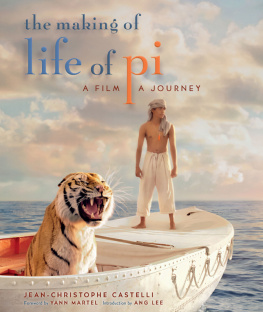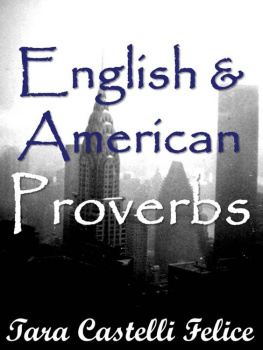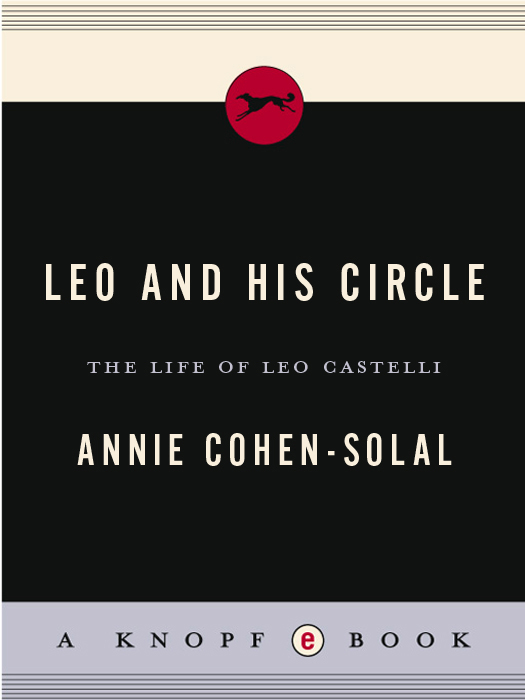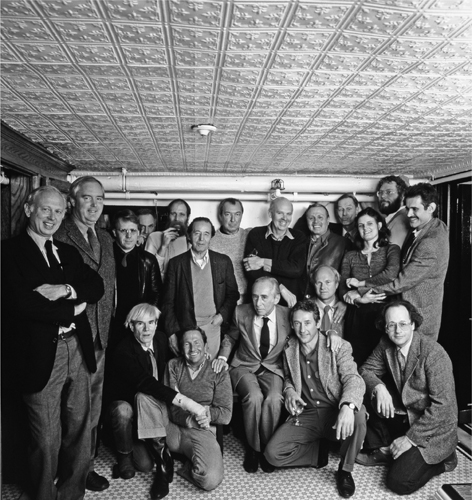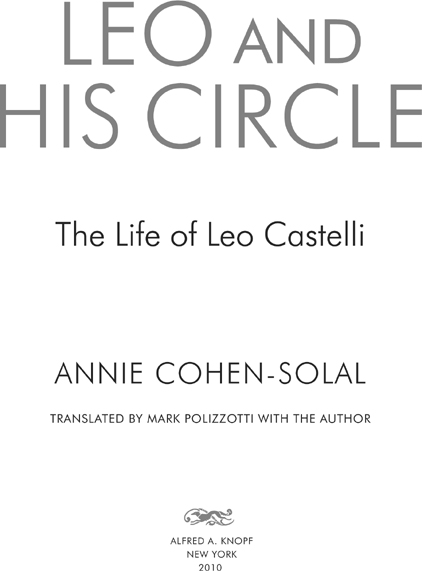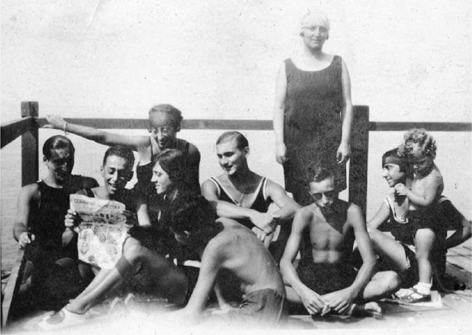THE ODON CAF, NEW YORK, FEBRUARY 1, 1982, TWENTY-FIFTH ANNIVERSARY CELEBRATION OF THE CASTELLI GALLERY
STANDING, FROM LEFT TO RIGHT : Ellsworth Kelly, Dan Flavin, Joseph Kosuth, Richard Serra, Lawrence Weiner, Nassos Daphnis, Jasper Johns, Claes Oldenburg, Salvatore Scarpitta, Richard Artschwager, Mia Westerlund Roosen, Cletus Johnson, Keith Sonnier. SEATED, FROM LEFT TO RIGHT: Andy Warhol, Robert Rauschenberg, Leo Castelli, Ed Ruscha, James Rosenquist, Robert Barry. Photograph by Hans Hamuth.
Courtesy of Center for Creative Photography, University of Arizona 1991 Hans Namuth Estate
ENVOI
SO, YOU ARE THE NEW ONE. Well, youre going to take the city by storm with your orange skirt and your long gloves! Why dont you come to the gallery tomorrow around five? Youll see the show, youll meet Roy. He has an opening, and youll stay for the party! With such melodious guile did Leo Castelli greet me at a dinner two weeks after my arrival in New York to take my assignment as cultural counselor for the French embassy. That encounter in 1989, our first, immediately set the easy tone for our relationship, which lasted until his death in 1999. Castelli, despite being eighty-two and wearing a hearing aid (a very discreet one, almost invisible), was still very much the flirtatious man-about-town, sailing on the confidence of his legendary name. That evening, he was escorting a new girlfriend, Catherine Morrison, a stylish British architect in her forties, and he giggled with her constantly, like a young lover.
On that day I unwittingly became part of the family, and so during my first year in the United States, I would find myself shuttling along with him from Minneapolis to Basel, from London to Houston, from New York to Washington, D.C., for the opening of Jaspers But there was nothing to rival his rapt intensity when he started to talk about Jasper, or when he was in Jaspers presence.
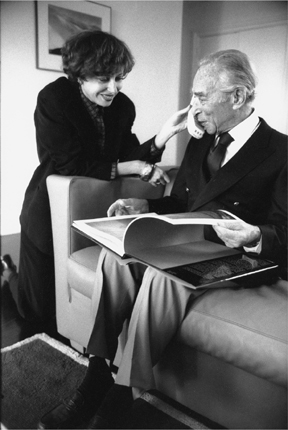
NEW YORK, OCTOBER 1990
With author as the cultural counselor to the French embassy in the United States
Mark Riboud
In fact, few were truly immune to Leos charm. Even when he stepped into a restaurant unexpectedly around midnight with a group of friends, whether in New York or Venice, the waiters and matre d would always set a table, treating him like a film star. A call of Bellini per tutti and the evening was under way! A few hours in his company could be a magical experience. If he had decided to adopt you, as he had me, the span of his wings spreading over you was most impressive, whichever of his haunts he brought you to. It was, however, not merely the urbanity of his presence that was so winning but also a certain eternal boyishness, as when he recited La Fontaines Le Corbeau et le Renard to me in perfect French with evident pride. Or, on one of our last museum excursions together, to see a Schiele show at MoMA, around Christmastime in 1998. The exhibition presented a beautiful and unknown series of erotic watercolors, and as Leo looked over the figures of naked women with an almost devotional regard, he drew near to one and said, Questo vorrei prenderlo a casa per guardarmelo bene (This one, I would like to take it home with me and look at it more closely), with a naughty smile.
Over the years, Leo told me about his life in bits and pieces. He mentioned consulting Edoardo Weissa student of Freuds and the most renowned psychoanalyst in Triesteat the age of eighteen, when he was having trouble approaching girls; he mentioned discussing business with Mihai Schapira, his father-in-law, who called him un bon rien (a good-for-nothing) for still living on his wifes money at the age of fifty. He spoke of his mistresses, his wives, his children; of Trieste, Vienna, Paris, Bucharest, and New York. Of course, all my impressions were formed in the context of New York in the 1990s in a world that was Leos, under the spell and choreography of Leo, the peerless maker of myths.
It would be another decade, and only after he had passed away, before I started making my own inquiries, following up the few leads he had given me, and longer still before I had managed to patch some of the pieces together. I traveled by plane, by boat, by train, by car, visiting Trieste half a dozen times over the course of four years, as well as going to Udine, Venice, Monte San Savino, Milan, Vienna, Budapest, Sikls, Bucharest, Paris, So Paulo, San Francisco, and New York; I excavated archives in Italian, Hungarian, Hebrew, German, French, English; I met with archivists, historians, rabbis, synagogue and consistory officials, mayors, bankers, and insurance company employees; I interviewed first and second cousins, nephews and great-nephews, visiting too all the houses where he had lived as well as the ancestral graves in the Jewish cemeteries of Italy and of Hungary. At the end of the quest, I was able to discern, in the chain of the forced displacements and wanderings his family was made to endure, a story of origins much more complex, much more fascinating, and much more tragic than that of the effortlessly jovial figure his self-fashioning had suggested. And it made me wonder: what was Castelli so determined to achieve by his self-portraiture, by his relentless rehashing of the same few stories that however elegant were, with regard to understanding him, ultimately a dead end?
Excited by the mystery, I persisted, as if conducting a criminal investigation. The very best moments of my journey were those in Monte San Savino, when, for instance, Renato Giulietti pulled out, among a mass of huge parchment scrolls, one page dated 1787 which read Nazionne Ebrea, Famiglia Castelli Castelli, Aarone, 50 Castelli, Anna, 30 Castelli, Giacobbe, Figlio, 9 Letizia, Figlia, 20 Sabatino, Figlio, 21 Likewise memorable was the day in Trieste when Mariu Hassid delivered to my hotel room a big envelope with a white sheet of paper which read in Italian: Comunit Ebraica di Trieste, Copia Integrale DellAtto Di Nascita Anno: 1907; Giorno e mese della nascita: 4 settembre; Data Ebraica: 25 Ellul; Nome del neonato: Leo


